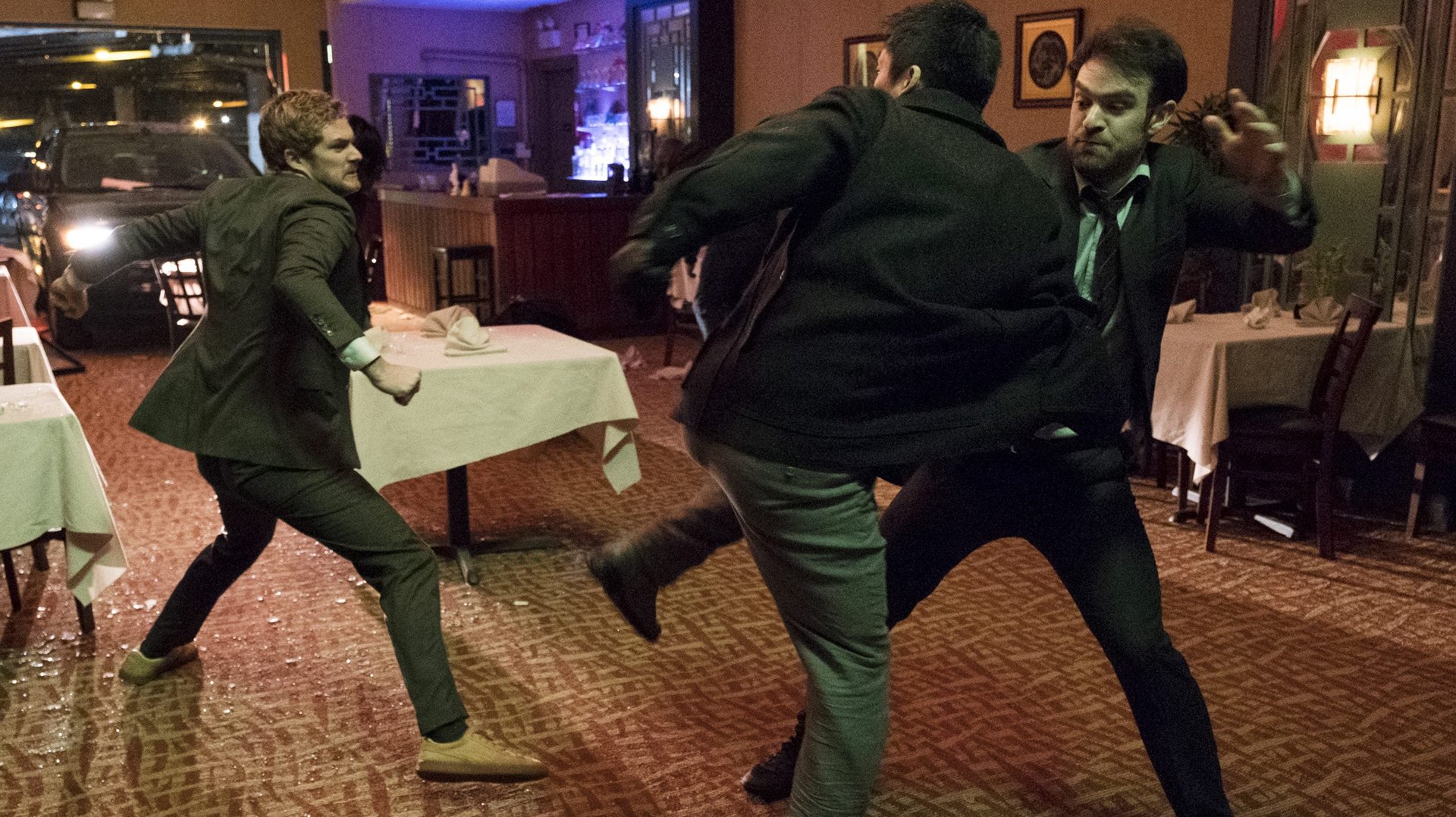Inside Netflix and Marvel’s heroic efforts to keep track of all the injuries to their superheroes
Daredevil, Jessica Jones, Luke Cage, and Iron Fist have taken their share of hits over each of their respective Netflix series. Those four shows became five yesterday with the release of The Defenders, which teams up all of Marvel’s Netflix superheroes.


Daredevil, Jessica Jones, Luke Cage, and Iron Fist have taken their share of hits over each of their respective Netflix series. Those four shows became five yesterday with the release of The Defenders, which teams up all of Marvel’s Netflix superheroes.
But they look no worse for wear. That’s not an oversight. The show starts about two months after the end of Iron Fist, Netflix’s last Marvel series, which gave the heroes time to recover from injuries sustained in their separate solo adventures. Sarit Klein should know. She tracks each of the four heroes individual cuts and bruises in excruciating detail.
Klein, the lead makeup artist for most of Netflix’s superhero stuff, told Quartz she has hand-drawn diagrams that illustrate each superhero’s wounds. She updates her “wound maps” before and after every scene. And she consults with everyone from the director of the episodes up to Marvel’s head of TV, Jeph Loeb, on how they should heal or scar. The rate of healing depends on each hero and their power; some heal faster than others.
Luke Cage has unbreakable skin. But he gets shot—a lot—and can be hurt internally. Jessica Jones only sustained a few injuries on her show, and those were the only times her makeup changed. Iron First has older scars on his body, which Klein tracks on a separate map from his fresh injuries.
“It’s a shared universe,” Klein says. “You can’t just make up stuff.”
It underscores the continuity challenges of working with four interwoven storylines built around superpowered protagonists that each have unique abilities.
For the trailer released at San Diego Comic Con for The Defenders, which showed them all in a fight down a white hallway, there were about 30 people on the call-sheet for that scene who had to be ready at the same time, including the heroes, villains, stunt doubles, and other characters. Everything had to be timed just right. “It’s like a feature film every nine days,” Klein said. “You get used to working fast.”
Klein, who also worked on the first seasons of each of Netflix’s Marvel shows, get scripts weekly while filming and is then on set in New York, sometimes until 5 or 6 am for night shoots. (Two units tend to shoot at once to keep the productions on track.) And even then, she often wakes up to many extensive email chains over hair and makeup, props, wardrobe, visual effects, special effects, tone, and so on. Sometimes, they include up to 15 people, from crew members to executives at Marvel and Netflix.
“They know what’s going to happen on the other shows,” she said. They can say, for instance, if a wound will only be around for two or three episodes, if it will be reopened later on in another fight, or if the character is near death and shouldn’t heal so quickly. “There are so many little things that you wouldn’t think of that we talk about.” Like Daredevil, who has really gone through the wringer. Remember season one, when he was beaten to a bloody pulp by Kingpin?
It took about an hour for two makeup artists to simulate all those injuries. And that didn’t include the time it took to cover up actor Charlie Cox’s four arm tattoos, the prosthetic from when nurse pal Claire Temple stitched him up (hidden under the bandage in the above photo), and makeup for his stunt double, whose facial hair also has to be matched to Cox’s.
Then there’s Temple, portrayed by Rosario Dawson, who is the connective tissue in each Marvel show. She was hurt in Daredevil season two and carried those injuries over to Luke Cage, which filmed at the same time. Klein connected with the makeup department on the former to figure out what injuries to replicate.
The minutiae becomes all the more important on a platform like Netflix, which releases seasons all at once for its members rather than rolling out episodes weekly. It’s easy to pick up on a miraculously healed wound or misplaced scar when binging episodes back to back, or perhaps an entire series in the span of a few hours.
“You have to think about this stuff because these shows, we’re doing it for the fans,” said Klein. “You want to make it as real as possible.”